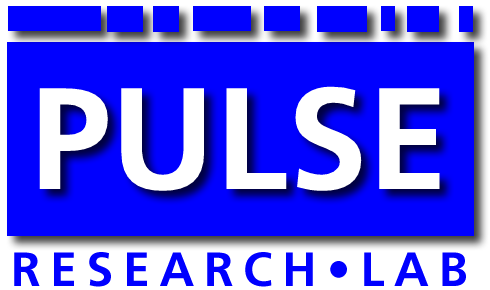8 Channel Differential Scanner with Extremely Low Skew
A prime contractor came to PRL with a requirement to translate and distribute a set of GPS signals (1 PPS, IRIG-B, and 10 MHz) throughout their ground stations with very low skew, measured both from channel to channel and also from unit to unit.
PRL designed 3 new products:
- PRL-4505, 1:8 Differential Fanout Buffer System, TTL or Differential NECL Input, RS422 Output, 2U Rackmount (also available as a bench unit)
- PRL-4506, 1:8 Differential Fanout Buffer System, TTL or Differential NECL Input, Differential TTL Output , 2U Rackmount (also available as a bench unit)
- PRL-4508, 1:8 Differential Fanout Buffer System, TTL or Differential NECL Input, Differential NECL Output , 2U Rackmount (also available as a bench unit by special order)


Fig. 1: The UUT
Testing a whole fleet of these units to the required skew tolerance, over a delivery schedule of several years, required a test mux with extremely low skew.
The task:
Route 8 pairs of differential NECL, TTL, or RS-422 signals to an oscilloscope to measure AC and DC characteristics, including skew. The test mux required an absolute reference path so that we could measure total propagation delay through each channel of each unit. This allowed us to test both channel-to-channel and unit-to-unit skew down to tens of picoseconds.
Finally, we wanted to build this test mux using all off-the-shelf products from PRL, so that we would not have to do any engineering.
The Solution:
Routing the differential outputs signals to the oscilloscope was simple. We selected the PRL-8216N-SMA, 16:2 Scanner with NECL Terminations, controlled by the PRL-USBIO-1 module. But to measure skew down to 10s of picoseconds, we had to carefully construct a reference path that was perfectly matched to the UUT drive and measurement path.
For the drive signal we selected the PRL-170N-10, NECL Crystal Clock Source, 10 MHz, driving a PRL-256N frequency divider. This provided us with four phase-matched sets of differential NECL clocks--two sets for our absolute timing references, and two sets for driving the UUT. The UUT has a NECL input and a TTL input, so we needed to translate two sets of clocks from NECL to TTL using our PRL-350TTL comparator. We could also have used a PRL-450ND translator. The "TTL" input of the UUT is specified with a non-standard VHi trigger level of 1.0, so we used a PRL-814 passive RF power splitter to knock down the output of the PRL-350TTL to match.
One we had the drive and reference signals that we needed, we used a set of PRL-852A-RM-SMA switches to route the appropriate signals into the UUT inputs and into the reference paths. The NECL and TTL inputs to the DUT are logically ORed together, so we needed to switch the un-desired signal off when we were testing the other input.
Once we had the desired drive signal routed into the UUT and into the reference path, it was time to measure! We used a set of PRL 8:1 scanner/switches to select the appropriate reference path and to select the desired differential output pair from the UUT to connect to the oscilloscope. Because NECL signals must be loaded with 50 Ohms/- 5V and cannot be connected directly to a ground-referenced load (such as a 50 Ohm oscilloscope), we used a pair of our switches with NECL terminations and 12 dB attenuation for scanning through the NECL outputs before routing them to our sampling scope.
A similar scanner with TTL termination/attenuation was used for the TTL reference path. To save space we built a one-off version of the PRL-8108 with two NECL channels and two TTL channels, and this is the only item in the entire test set that is not a standard, off-the-shelf product. We could also have implemented this with one NECL scanner and one TTL scanner, especially since the reference signal must pass through one additional switch stage anyway (PRL-852A-RM #2, Ch. 2 on the diagram) in order to match propagation delays between the UUT path and the reference path. As currently wired that additional switch stage never switches; it's there only to match prop delay. It could be set up to switch between two scanner boards and make this setup 100% off-the-shelf.

Various coupling and termination modules were used to terminate unused signals (PRL-FTR-50 or PRL-ACT-50) and provide DC-blocking for AC-coupled signals (PRL-SC-104A).
The entire test set is controlled by the PRL-USBIO-1 module, connected to the control pins of the PRL-852A-RM and PRL-8216N scanner modules. LabVIEW VIs for the PRL-USBIO-1 module are available upon request.
Here is the resulting test set. It is not a pretty sight, and could use some additional packaging work (this set was built before the PRL-MRK-3-1 rack mount kit was available), but it performs very well:

When the UUT is replaced by an SMA bullet the measured skew to the reference path is < 20 ps, despite the signals passing through a frequency divider, a splitter, a level translator, 5 cables and 3 switching stages between the original clock source and the scope.
We were able to test a fleet of fanout buffer systems to < 100 ps skew (NECL input) and < 200 ps skew (TTL input).
Other Versions
Similar test muxes were created for the TTL and RS422 versions of the fanout buffer. We have delivered many units over a span of 8 years, and we can trace unit-to-unit skew back to the first units ever delivered.
